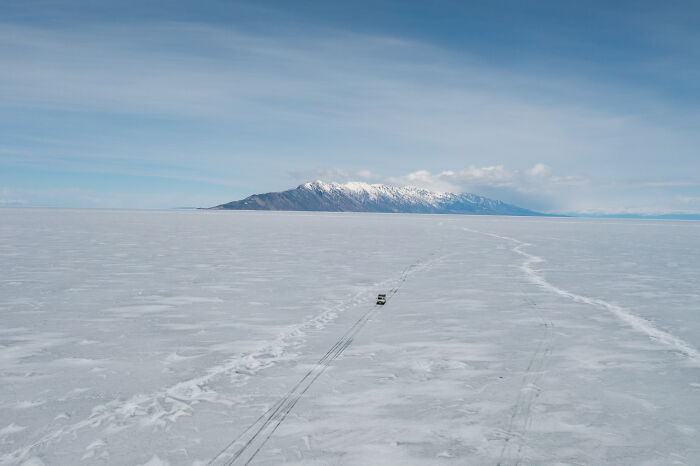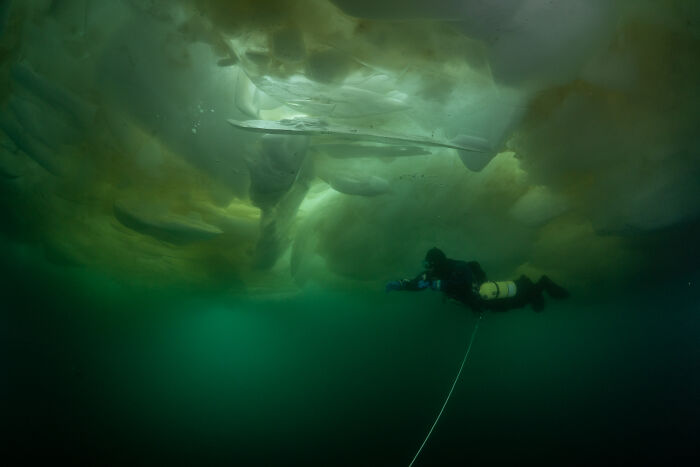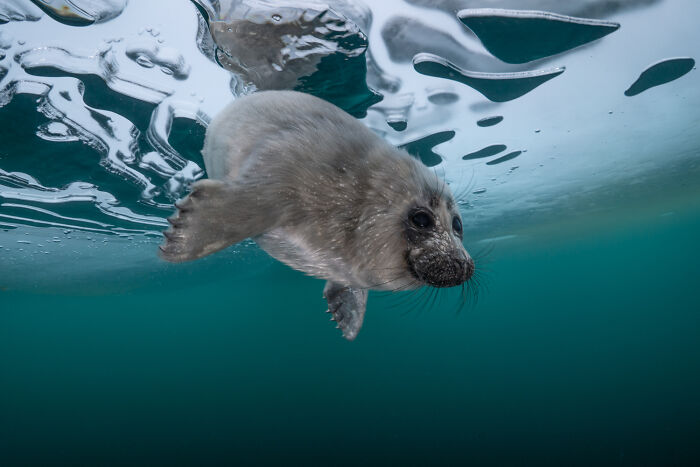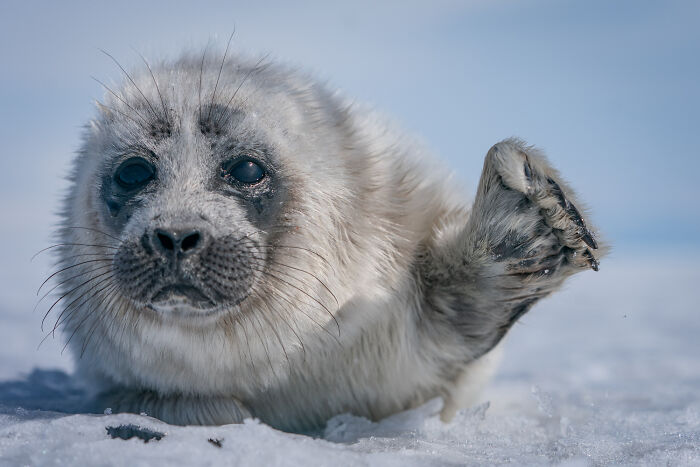
Beneath The Ice: I Took Underwater Shots Of Lake Baikal’s Seals (16 Pics)
Baikal is the lake of superlatives: the world’s deepest lake, largest freshwater lake and one of the clearest lakes on the planet. Baikal is home to many species of plants and animals which are endemic to the region.
My goal was to find and photograph Baikal seals, locally known as nerpas, underwater, in their natural environment – not many people have done it before, and I really wanted to show others the pristine beauty of this place and its inhabitants. I already tried it 3 years ago, in November, and haven’t succeeded: the lake freezes around mid-January, and it was quite difficult to find nerpas in open water. Being way too shy, they disappeared at the edge of sight.
But I never gave up. So last year I came to Lake Baikal in April, when Siberian spring is awakening, snow is melting, the sun dazzles the eyes, and the only thing that reminds you that winter has still got strong positions here – the surface of the lake is completely covered with an endless sheet of ice.
More info: dmitrykokh.com | Instagram | Facebook
Driving on ice in search of seals
Hours of searching can be exhausting even for the toughest ones
I already told you that Baikal seals are very shy, but not the young ones! Nerpa females give birth in March, in snow-covered burrows on the ice. Newborn pups are covered with white fur, they cannot swim yet, and it’s not really possible to get close without harming them. In a few weeks, the fur becomes grey, and the pup is ready to explore the depths of the lake and the magical world below the ice.
Pulka next to the supposed burrow
It’s not so easy to find a burrow in the vast icy desert, and we arranged professional help – local dog Pulka was trained to do this job for years.
The seal’s burrow has an exit to the lake from under the ice, so our strategy was to locate it, dive, and then – wait for a nerpa, of course!
Ceiling and walls of ice underwater
But looking for Baikal seals under thick ice can be incredibly difficult, and takes many dives to get lucky. The first time, we were diving next to a giant crack in the middle of the lake. These cracks were formed due to temperature changes and can be several miles long! They can also change shape and size during the night, which is an obvious concern for people driving across the lake, as they need to be on high alert and find alternative routes. The surface of the ice is visually incredible but underwater – the cracks look even more phenomenal. Huge ice blocks are layered on top of each other, forming caverns and passages. And when you’re inside these passages, you cannot stop thinking about the depth below and an endless ceiling of thick ice above you. The only way back is a small hole in the ice a hundred meters away – a precious window to our world.
Clouds of ice formation
Another type of ice diving in Lake Baikal is getting under the “ice cloud” – a massive ice formation, which is formed at the beginning of winter when strong winds move huge floes along the water. Rapidly changing light and different colors really give an illusion of being under some fairy tale sky. Pretty cold fairy tale though!
Doorway into another world
Baikal seal pup up close
After a few dives and Pulka’s strong efforts, finally, I reached the precious target. While slowly getting close to the burrow from beneath, I saw some movement there, and then – a curious nose.
For sure, the seal pup was quite surprised to see an unknown clumsy creature heavily loaded with gear. Maybe that explains why it stayed with me for 15 minutes or so – keeping distance but making circles to get a better look.
A very peek-a-boo moment
Air bubbles on the ice surface are signs of nerpas’ breathing, most likely from the mother of this young seal. She only surfaces once or twice a day this time to suckle her pup and to check that the ice hole is not frozen.
A very cuddly-looking fella
Baikal seal floating in an ice crack
But seals already know – the ice is melting very fast in April, and very soon they will swim freely all around the giant lake, which was named by locals since ancient times – the Glorious Sea.
A young, curious and friendly pup!
Greetings from Baikal!
10Kviews
Share on FacebookI only counted 13 photos, not 16??? Where are the other 3??? But cute seal pups, I hope they won´t be hunted by Canadians or any other people, I hope they´re safe at the Baikal Lake. Thanks for posting. I follw the photographer on Bored Panda now and hope for more posts of him soon.
Lake Baikal is in Russia, and the Nerpa seal has a healthy population. Hunted by Canadians tho?
Load More Replies...I only counted 13 photos, not 16??? Where are the other 3??? But cute seal pups, I hope they won´t be hunted by Canadians or any other people, I hope they´re safe at the Baikal Lake. Thanks for posting. I follw the photographer on Bored Panda now and hope for more posts of him soon.
Lake Baikal is in Russia, and the Nerpa seal has a healthy population. Hunted by Canadians tho?
Load More Replies...
 Dark Mode
Dark Mode 

 No fees, cancel anytime
No fees, cancel anytime 


































































174
16